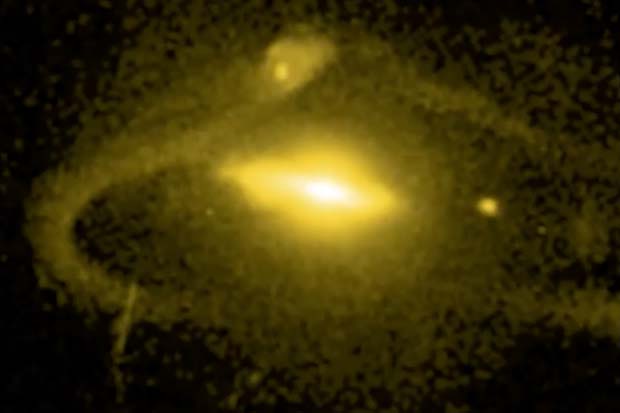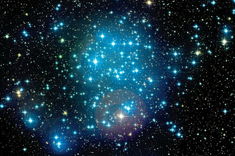This image, captured by NASA’s Cassini spacecraft on Jan. 16, 2015, shows Saturn’s shadow barely reaching across the planet’s famous ring system. Saturn’s iconic rings disappear into shadow in a gorgeous image by NASA’s Cassini spacecraft. That shadow, cast by Saturn itself, extended far beyond the rings for years after Cassini reached the planet in […]
Tag Archives | space
[Institute of Space and Astronautical Science (ISAS)] HINODE: the 10th Anniversary of its Launch
Happy Birthday “Hinode”! The solar observing satellite “Hinode” will celebrate the 10th anniversary of its launch on 23 September (Japan standard time). This 3-minutes movie presents the solar atmosphere fulfilled with active phenomena much more than ever imagined, captured with the Hinode telescopes. On 23 September 2006 (Japan standard time), the last vehicle in the […]
![[Interview] Kenichi Shishido Deputy Director General, JICA "Japanese Space Technology Protecting Forests Around the World" interview_profile](https://b47994.smushcdn.com/47994/files/2016/09/interview_profile.jpg?lossy=1&strip=1&webp=1)
[Interview] Kenichi Shishido Deputy Director General, JICA "Japanese Space Technology Protecting Forests Around the World"
The Japan International Cooperation Agency (JICA) is an independent administrative institution that coordinates official development assistance for the Government of Japan. The agency uses data collected by JAXA’s Earth observation satellites to plan its activities in the areas of forestry and conservation, water resources, disaster management, and cartography. We interviewed Kenichi Shishido, who is in […]

Blue Origin Announces Big 'New Glenn' Rocket for Satellite & Crew Launches
Blue Origin’s newly announced New Glenn rockets will feature reusable first stages, and the two-stage and three-stage versions will be 270 feet (82 meters) and 313 feet (95 m) tall, respectively. Billionaire entrepreneur Jeff Bezos announced this morning (Sept. 12) a massive new reusable rocket family in development for his private spaceflight company Blue Origin. […]

Missing Galaxies Near Milky Way Destroyed From Within, Simulations Suggest | Video
By Steve Spaleta | September 12, 2016 12:02pm ET For decades astronomers have study what happened to thousands of dwarf galaxies around the Milky Way that were predicted by simulations, but not observable. New supercomputer simulations suggest that they were destroyed by supernova explosions. credit : Caltech Watch more ► Shows Skylon SABRE – A […]

Author Q&A: Margot Lee Shetterly Reveals NASA's 'Hidden Figures'
Author Margot Lee Shetterly reveals the history of NASA’s African-American female mathematicians, or “computers,” in the new book “Hidden Figures.” More than a half century after the first NASA astronauts launched into space, one might think that there are no sweeping narratives left untold about the early years of the U.S. space program. But there […]

Europe Exploring Solar System And Beyond With Spacecraft Fleet | Video
Recommended videos for you Missing Galaxies Near Milky Way Destroyed Fro… Europe Exploring Solar System And Beyond With… Virgin Spaceship ‘Unity’ Takes Flight Mated T… Space Telescope’s ‘Star Trek’ Reveals ‘Enterp… Saturn Moon Titan’s ‘Shangri-La’ Revealed By… Blastoff! OSIRIS-REx Launches To Asteroid Ben… OSIRIS-REx: NASA Mission To Study Asteroid Be… Listen: Jupiter’s Auroral Radio Emissions […]

Space for inspiration
Live – follow this two-day event exploring the impact of human spaceflight on our world To source

Star mapper
Explore the sky with this new visualisation using data from ESA’s Hipparcos mission To source

At Hangar, Raptors Find Shelter from the Storm
As Tropical Storm Hermine charged up the East Coast Sept. 2, the hangar at NASA Langley was able to carefully sandwich in more than a dozen Air Force fighters and offer them protection from the wind. The hangar provides 85,200 square feet (7,915 square meters) of open space and large door dimensions that allow for […]

First Gaia Data Release
Gaia’s first star catalogue will be unveiled on Wednesday, 14 September. Watch livestream from 09:30 GMT / 11:30 CEST To source

Crash! Early Collision Could Explain How Earth Kept its Carbon
New research into the ratio of elements in Earth’s mantle suggests that the planet’s carbon might have come from a collision with a planet embryo around 4.4 billion years ago. The early Earth could have been hit by a Mercury-like planet embryo deep in its past, letting the planet keep hold of the carbon necessary […]

Stormy Protostars Can Give Birth to Multi-Star Systems
An artist’s impression of the binary star system HK Tau shows the stars’ misaligned disks. Measuring the orientation of the stars in multiple-star systems like this one could help astronomers learn how the stars came together. Stars that twinkle in the night sky may look like individual points of light when viewed from Earth, but […]